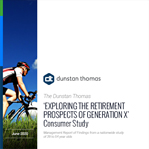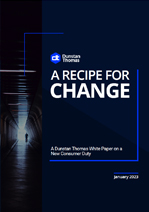Improving Retirement Income: Maximising excess pension savings
23 October 2023
Evidence from recently published research conducted by the Pensions Policy Institute (PPI), working with the Pensions & Lifetime Savings Association (PLSA), focuses on the need to increase young workers' pension contributions from the 8% of salary that auto-enrolled defined contribution-based (DC) pensions currently deliver by default, to at least 12%.
Some even argue that median pension contribution rates need to rise to 15% to counteract lower growth of investments as well as increasing life expectancy which is set to lengthen retirements for 22-year-olds today by at least four years (when compared with those retiring this year). There is also much talk of employers needing to increase their share of contributions.
There is an increasing recognition that soon-to-be-dominant workplace DC-based pensions are a relatively poor relation in retirement savings provision terms, particularly in terms of employer contribution levels, when compared with the defined benefit (DB) pensions of yore.
Mansion House Reforms
Recently, the chancellor, via his ‘Mansion House Compact', focused on the need to get pension savings working harder for long-term savers - while helping to bankroll the wealth-generating firms of the future.
Nearly two-thirds of the UK's entire DC workplace pensions market including Aviva, Scottish Widows, L&G, Aegon, Phoenix, Nest, Smart Pension, M&G and Mercer, have committed to allocating at least 5% of their default funds to higher-risk unlisted equities by 2030. These huge providers are like leviathan oil tankers - they need a very long time to make even a small change of direction. Yet I'm thinking that a 5% allocation to an asset class is pretty small from a client's perspective.
However, although retirement income prospects are currently poor for workers new to the world of employment, there is some good news for more mature savers running households already. The Office for National Statistics found that instead of Household Savings Ratios (HSRs) falling back to around 5% post-pandemic - the average in the four years prior to the pandemic - it actually climbed back up in the second half of 2022 to reach its highest level since Q4 2015. HSR was at a record-breaking 9.3% in Q4 2022.
No surprise perhaps: it is natural human behaviour to hoard when it looks like we are heading into a lengthy downturn - especially when the cost of borrowing looks so prohibitively high. Those of us running households have been preparing for the worst: a potential dip in regular income while inflation is still running hot.
Retirement Prospects
The real danger is that in these tougher times, clients save more but don't put those savings to work effectively, instead keeping them close at hand ‘just in case'. They may fail to combat inflation and erode the value of hard-earned savings by keeping more by way of reserves in low interest instant access-style savings accounts or cash ISAs.
 Moreover, Dunstan Thomas' own 2020 consumer research of Generation Xers retirement prospects, then aged 40-55, found that when exposed to financial disruption (in this case referring to the ‘Great Recession' of 2008-2013) one in ten saw ‘a major impact with retirement savings going on hold for all or nearly all' of that infamous five-year downturn.
Moreover, Dunstan Thomas' own 2020 consumer research of Generation Xers retirement prospects, then aged 40-55, found that when exposed to financial disruption (in this case referring to the ‘Great Recession' of 2008-2013) one in ten saw ‘a major impact with retirement savings going on hold for all or nearly all' of that infamous five-year downturn.
This impact proved worse for the self-employed: one in seven (14%) of them froze all retirement contributions during the same period. Furthermore, 15% of Gen Xers with a monthly household income of £4,501 to £5,000 recorded halting pension contributions for most or all of this period.
It seems likely that ‘formal' pension contribution-based savings may again have been hit by the twin effects of the pandemic, closely followed by the current cost of living crisis and the linked ‘slow-to-no-growth' economic cycle.
Pension Savings Strategies
We are now in the annual 'Pension Attention' campaign season, so I'd like to conclude by considering how best to help clients use the value of any excess savings to bolster their retirement income prospects. What are the options and strategies for building a platform for more resilient retirement saving and (eventually) income?
Review client risk ratings
Extra savings can only be invested sensibly if the client's risk tolerance is up to date. The enforced inactivity of lockdown led to many people building up a larger savings cushion than before. We also saw a lot of job changing as we came out of the pandemic, which went to prove that people with skills and experience can always find new employment even if their old employer is struggling. Both of these factors would support an increase in a client's risk rating.
Diversify your investment base
If clients have an occupational pension which is heavily exposed to ‘cautious' assets - bonds etc., consider setting up a supplementary pension (either a self-invested personal pension (SIPP) or employer-based additional voluntary contribution arrangement) which is more exposed to higher risk assets. The workplace pension may be passively tracking an equity index dominated by large cap stocks but by using a SIPP the client can diversify into funds or investment trusts that focus on smaller companies, on infrastructure or on private equity investments. Use the allocation in the SIPP to bring up the overall portfolio's risk rating to the right level for your client. The chancellor is even looking at creating a new type of ISA which allows investment in higher risk, higher return assets, no doubt including unlisted assets - one to watch as we approach the next Budget and potentially a useful alternative home for those additional savings
Platform Tools to assess risk and sustainability
The Financial Conduct Authority's Consumer Duty has an overarching theme of avoiding foreseeable harm. What better way to do this than to take a new tool into the client's annual review and use it to run the ruler over their finances?
Seeing things from a fresh perspective will provide lots to talk about in the review meeting and add value by suggesting where existing strategies can be fine-tuned and adapted. Keep a look out for new technology using artificial intelligence algorithms that can be plugged in and left in place to monitor progress over the coming year.
You could set these tools to throw up alerts, or for more confident clients they could be deployed to automatically make changes such as balancing their risk profile with their current portfolio of investments - perhaps increasing the percentage of savings invested in higher growth assets within clients' prescribed tolerances.
Adrian Boulding
Director of Retirement Strategy at Dunstan Thomas
023 9282 2254
enquiries@dthomas.co.uk
